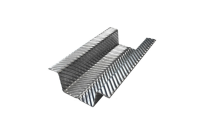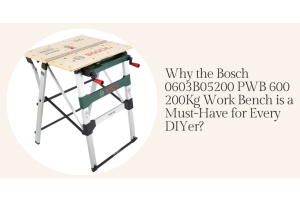Metal Profiles for Construction in UAE: Uses and Benefits

Gypsum board metal pieces and accessories are crucial in building work. They're essential for setting up and finishing walls and ceilings made of gypsum board, the foundation for walls and ceilings. These pieces mould and frame your visions into reality. In this guide, we'll look at the different kinds of metal profiles and accessories, their uses, and their benefits.
What are Gypsum Board Metal Profiles and Accessories?
Gypsum board metal profiles and accessories play a significant role in setting up gypsum board walls and ceilings. They give strength, create tidy edges, and make indoor spaces more appealing. The key types of these metal profiles are:
- Ceiling C and Ceiling U profiles for suspended ceilings
- Wall C and Wall U profiles for partition walls
- Omega Furring Channel and Main Channel for suspended ceilings
- Stud and Track profiles for partition walls
- Corner profiles and beads for protecting wall corners
Accessories like brackets, clips, hangers, screws, and holders, go with metal bars to set up plasterboards. Most are coated with hot-dip galvanised steel to resist corrosion.
Accessories come in many sizes and thicknesses for different building needs. Picking and fitting the suitable plasterboard bars and parts is vital. It helps get top-notch, long-lasting work in indoor builds.
1. Ceiling C Profiles: Uses and Benefits
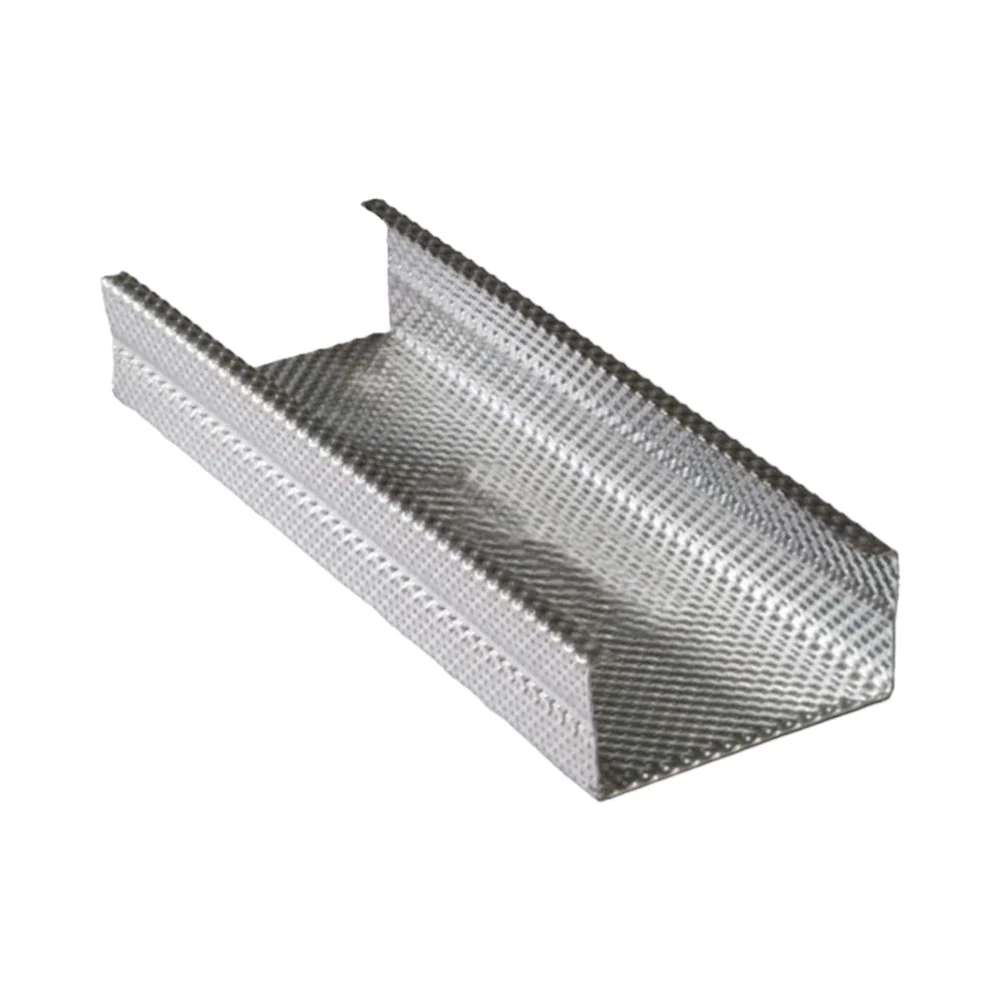
Ceilings C profiles are akin to the spine of floating ceilings. Across the UAE, architects and designers favour them for their stylish functionality. Beyond mere supports for your roof, these sturdy elements play a central role in achieving a sleek, contemporary look by hiding unsightly wires, ducts, and other fixtures.
Here's why C profiles are a must-have for construction projects:
- Solidity: These profiles give the structure that keeps your floating ceiling steady and safe for a long time.
- Swift and Simple Set-up: C profiles are designed to expedite the ceiling set-up process efficiently, sparing you time and energy.
- Better Looks: They lend your ceiling a smooth, complete appearance, enhancing the aesthetics of your space.
- Sound Control: Where controlling noise is crucial, floating ceilings with C profiles add a soundproof layer, offering calmer environs.
- Concealment: Forget about the mess of wires and visible ducts. C profiles provide a neat backdrop, covering your ceiling's inner systems for a tidy look.
2. Ceiling U Profile: Uses and Benefits
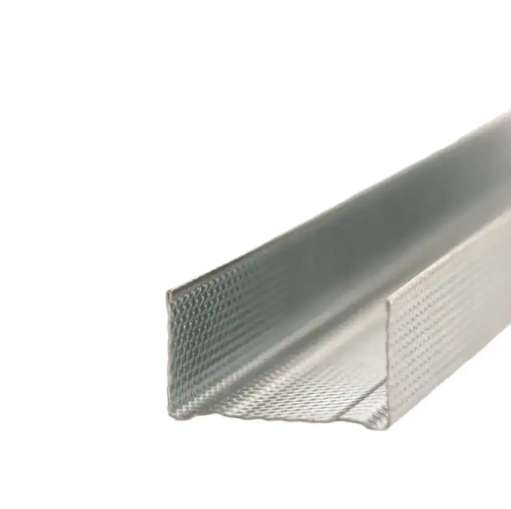
Think of the Ceiling U profile as a building's hidden MVP. This critical element of suspended ceiling systems is like a Swiss Army Knife for various wall types. It's a problem solver in new buildings and old ones, especially when solid walls come into play.
Together with other metal pieces, it's got lots of uses. Here's what it brings to the table:
- Backbone Strength: It gives the ceiling a solid support system, keeping things steady and long-lasting. Material Support: It becomes a firm base for gypsum boards or other ceiling bits, creating even surfaces.
- Concealed Infrastructure: Thanks to the U profile, all the pipes, ducts, and wires stay out of sight behind the ceiling.
- Aesthetic Enhancement: Its clean, crisp lines enhance the ceiling's aesthetics, making the interior look sharp.
- Acoustic Optimization: It reduces echo and absorbs noise, creating a more acoustically pleasant setting.
- Thermal Insulation: It boosts energy efficiency and removes utility bills with extra insulation.
- Fire Safety: Cloaking a big part of the original ceiling steps up fire safety. Design Moves: Suspended ceilings with U profiles let you play around with patterns and materials.
- Easy maintenance: If a panel gets damaged, swap it out. Your ceiling stays looking great without much fuss.
3. Stud Wall C Profile: Uses and Benefits

The C profile stud wall, made of solid galvanised steel, is the hidden strength behind those clean-looking partition walls in new buildings.
It is available in many sizes (50mm, 75mm, and 100mm), and this part is more than just metal - it's the vital spine of your interior look.
This multi-purpose part has several key jobs:
- Structural Support: It provides vital support for your walls, ensuring they stand tall and easily handle daily use.
- Complete Framing: With Wall Track U profiles, an entire frame system is formed to back your wall choices.
- Insulation Use: The space inside the studs makes an excellent spot for insulation, strengthening your wall's heat and sound control.
- Stable Attachment: Gypsum boards attach smoothly to the metal frame with screws for a solid and long-lasting surface.
- Long-lasting: Its galvanised steel form fights off rust, promising many years of service.
- Light but Strong: It builds sturdy walls that don't weigh down your building.
- Creative Freedom: Walls can be adjusted or moved quickly, allowing flexibility to adapt your space.
- Service Integration: The wall cavity is a handy home for electrical, plumbing, and HVAC systems.
- Fire Safety: When matched with the right gypsum board, it aids your wall's overall fire resistance.
4. Track Wall U: Uses and Benefits
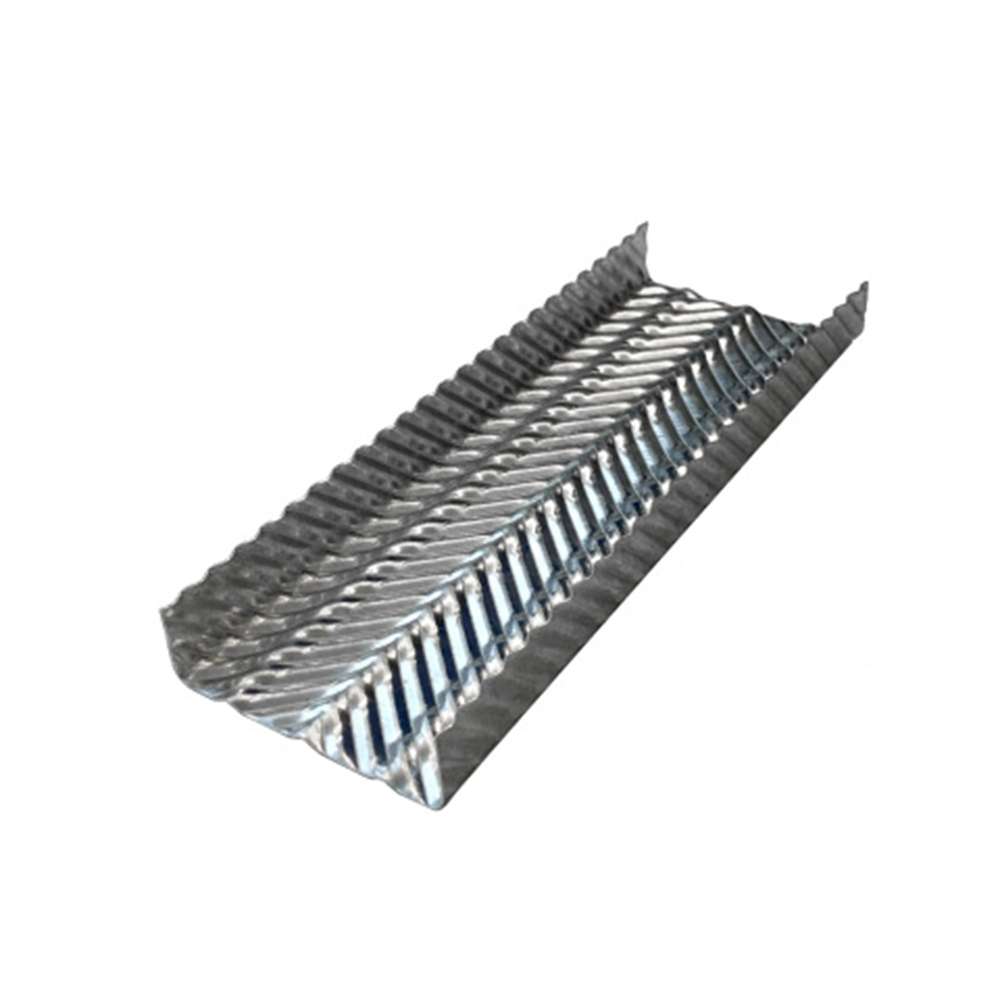
Track Wall U is the backbone of your drywall system. Think of it as the sturdy stage where your walls perform. This vital piece does a lot:
- Anchoring the Studs: Track Wall U sits at the top and bottom of the wall, where the Stud Wall C profiles connect.
- A Framing Friend: It works with Stud Wall C profiles to build the framework of your partition walls.
- It Gets Set Just Right: The Track Wall U ensures that the Stud Wall C profiles are placed correctly and evenly spaced, creating a straight and level wall.
- Strong: Made from galvanised steel, it withstands corrosion, giving your walls long-term support.
- Fits All Sizes: It is available in standard widths of 50mm, 75mm, and 100mm for walls of different thicknesses.
- Easy to set up: Its simple design allows for fast and efficient wall framing, saving precious time.
- A Sturdy Base: A strong base for gypsum board panels makes your partition wall steady and long-lasting.
- Ensures Strength: By keeping the studs anchored and aligned, the wall enhances its overall stability and strength.
5. Omega Furring Channel: Uses and Benefits

The Omega Furring Channel, with its unique shape, does more than look good. It gives hanging ceilings strength and a smooth finish by hiding wires, pipes, and other utilities under a seamless ceiling. The roles it takes on are:
- A framework for Suspended Ceilings: It becomes the main base where tiles or panels attach.
- Covering Infrastructure: When everything needs to be hidden, the Omega Channel and its furring system conceals electricity wires and cooling & heating ducts.
- Creating a Smooth Finish: Gypsum boards or other materials can lay flat and look even because of the Omega Channel.
- Reliable Support: Its omega shape provides the support needed for a stable, long-lasting hanging ceiling.
- Customizable Design: It is available in several sizes to meet various needs for design and installation.
- Speedy Installation: With the Omega Channel, the furring system quickens the building process.
- No Unwanted Visual Distractions: Thanks to the Omega Channel, messy wires and pipes are out of sight, presenting a clean ceiling.
6. Metal Profile Main Channel: Uses and Benefits
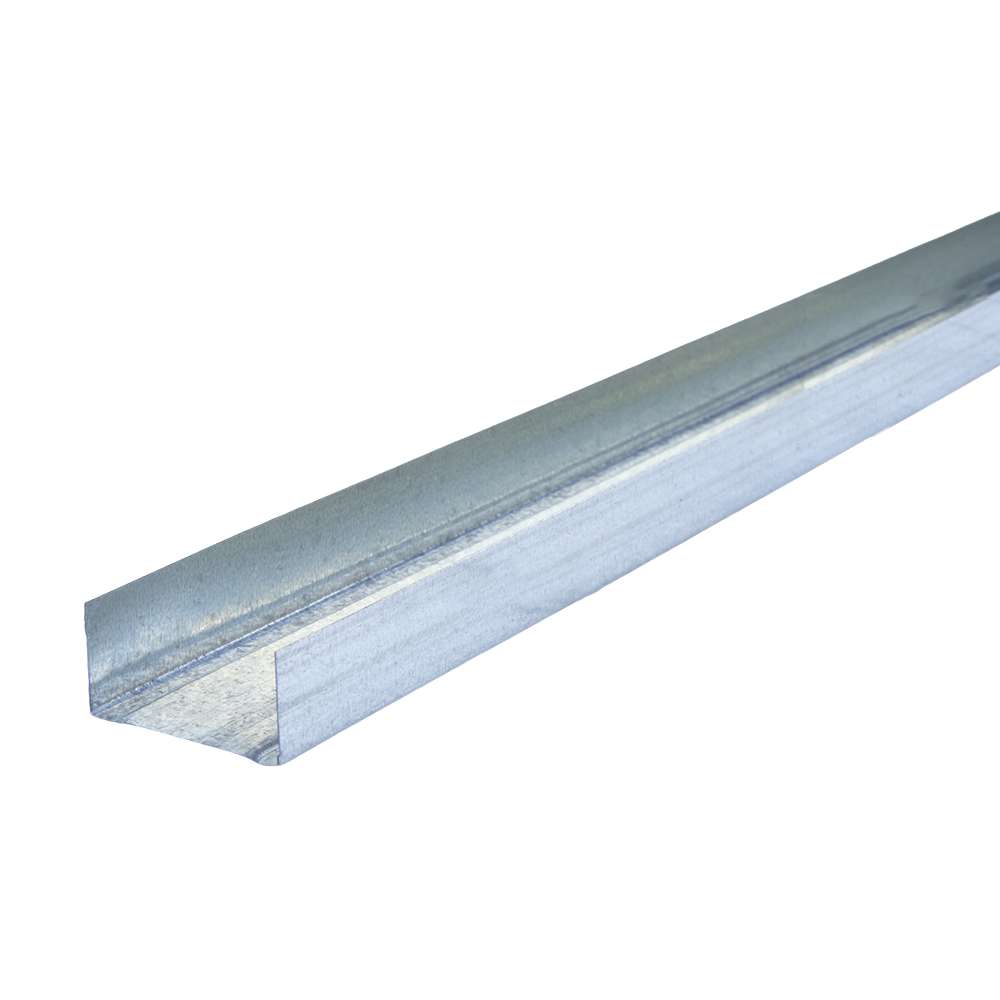
The main channel of the metal profile is the backbone of suspended ceilings. This sturdy profile made from dipped galvanised steel spans the ceiling grid, supporting cross tees and extra parts.
This all-around piece performs many roles:
- Ceiling Grid Foundation: It's the base for ceiling grids, aligning with walls and carrying ceiling supplies.
- Drywall Framing: Like ceilings, main channels are used in drywall framing, making a solid hook for gypsum board.
- Infrastructure Integration: The open layout allows for easy installation of electrical conduits, pipes, and services in the ceiling hole.
- Strength and Durability: It is built from top-notch galvanised steel, can withstand heavy loads, and stays strong.
- Versatility: Available in different sizes and adaptable, it suits different room sizes and tasks.
- Simple Installation: It is easy to put up, with pre-punched holes or slots that allow quick and safe attachment to the system or structure.
- Corrosion Resistance: Its galvanised coat fights rust and corrosion, securing the ceiling system's life span.
- Clean looks: Main channels create a sleek, modern suspended ceiling look, adding professionalism to any space.
7. L Corner Profile: Uses and Benefits
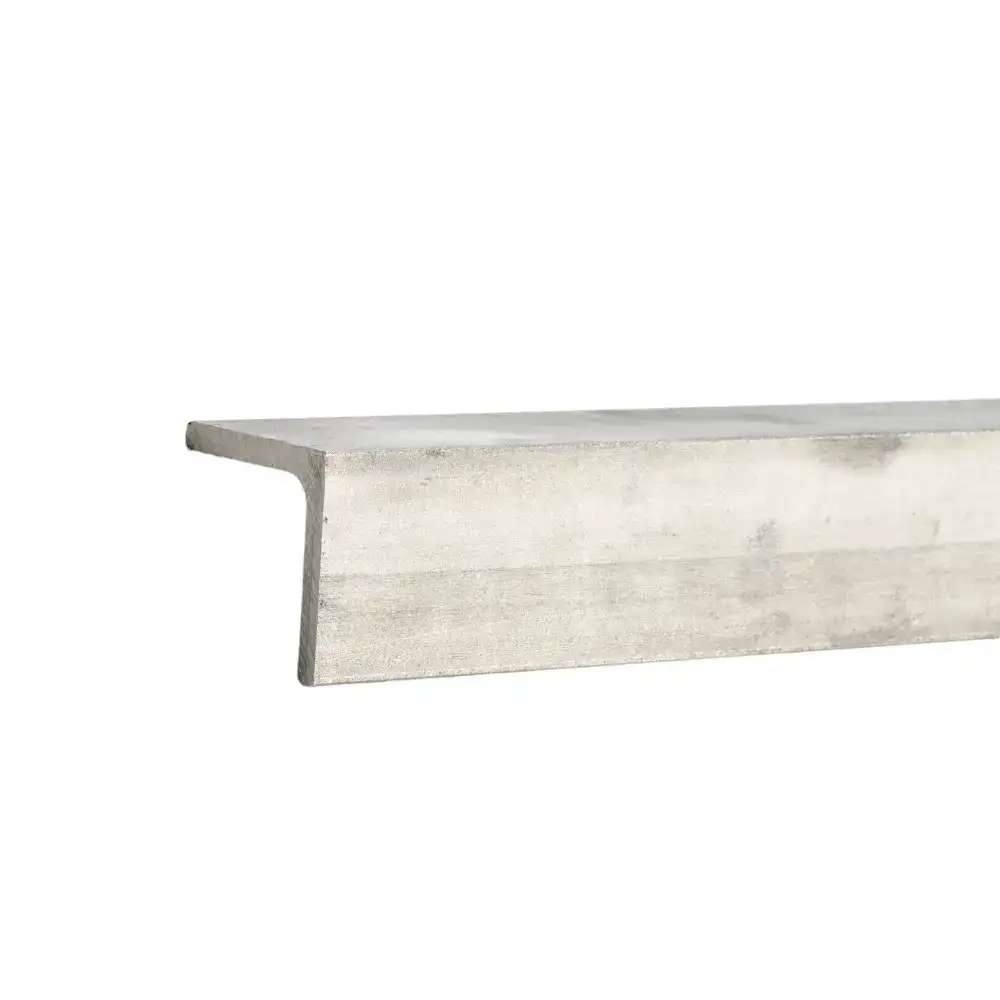
The L Corner Profile is a simple but crucial metal strip that helps protect the edges of your gypsum board installations.
This L-shaped piece fits perfectly over external corners, providing both shielding and a finished look. Using L Corner Profiles in your construction has clear benefits.
- Corner Protection: It's a guard that shields wall and ceiling corners from knocks, rubs, and daily wear and tear.
- Edge Reinforcement: This profile reinforces gypsum board edges, preventing breaks, cracks, and other damage, especially in busy areas or while building.
- Durability: Made of robust metal, it keeps your corners looking good and staying vital for years.
- Aesthetic Enhancement: It gives your corners a clean, professional finish, adding a hint of style to the overall look.
- Long-Term Protection: Preserving the strength of your walls and ceilings also reduces the need for future repairs and maintenance.
8. Corner Beads: Uses and Benefits
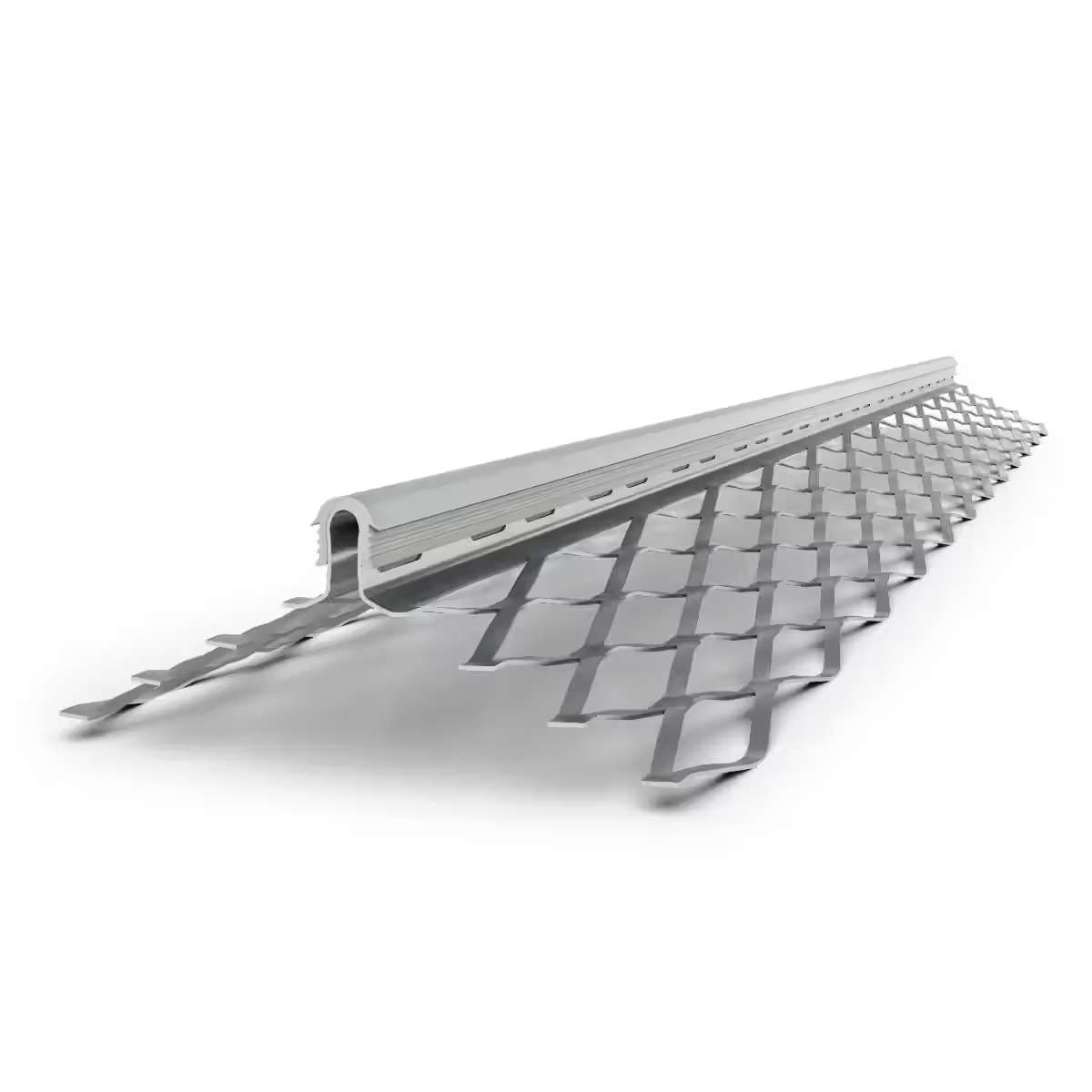
Corner beads aren't in the spotlight, but they're vital! Whether a plastering job or a rendering project, these handy helpers make corners neat and challenging.
Built with materials like galvanised steel, stainless steel, or PVC, they shield your corners from harm while keeping them looking sharp. These simple squares perform several construction tasks.
- Corner Reinforcement: Corner beads strengthen outer corners from unplanned bumps and hits.
- Precision Angles: They make straight 90-degree angles for a sleek, pleasing finish.
- Render Guidance: Metal corner beads act as a path for rendering application depth, promising steady, uniform outcomes.
- Plasterboard Protection: Edge beads, a variety of corner beads, protect plasterboard edges by wrapping them in solid steel.
- Strength: Metal corner beads are long-lasting. They can withstand lots of use.
- Bend and Twist: PVC corner beads are flexible. They help prevent damage from movement and pressure.
- Enhanced Aesthetics: Corner beads make your building look tidy and professional.
- Easy to put in: These parts are easy to install, which is good for both pros and DIY folks.
- Use What You Need: You have choices like metal or PVC. Pick what's best for your construction needs and preferences.
9. Metal Profile Accessories: Uses and Benefits
Metal profiles form the backbone, but the accessories complete the picture. Things like connectors, screws, hanger bars, clips, and steel dowels may seem minor, but they're vital in the big picture of putting up gypsum boards.
Each accessory has a particular job in making the installation a success:
- Metal connectors: These connectors link metal profiles to make a smooth structure for your ceiling or wall.
- Self-drilling screws: These attach gypsum boards tightly to profiles. They also secures other parts, making sure everything stays solid and stable.
- Hangers: They hang ceiling C profiles from the top, starting the process of making your suspended ceiling.
- Hanger bars: These bars give extra support. They spread out the load of the suspended ceiling so it won't sag or shake about.
- Clips: You also need clips. These clips can hold omega furring channels in place on the main channels, making a flat and level base for your ceiling.
- Steel dowels: They are anchors. They attach metal profiles to concrete or brick walls, creating a solid starting point for your task.
These usually overlooked accessories are essential. They have many benefits.
-
- Complete System: These pieces compose an entire system, ensuring every part of your gypsum board set-up is firmly together and held up.
- Easy Set-up: These extras are user-friendly, helping simplify the set-up.
- Solid Build: They make your gypsum board builds stable and lasting, ensuring your walls and ceilings last a long time.
- Flexibility: There's a wide selection of extras. You can modify your set-up to fit specific construction requirements.
How to choose Gypsum Board Metal Profiles and Accessories for your project?
Choosing the correct profiles and accessories for your gypsum and plasterboard project is critical for successful completion. Don't just take the first products you find; make smart decisions that best suit your project's unique needs.
Let's break down the key considerations when selecting these essential components:
1. Conditions:
Will your project be exposed to much moisture? If so, choose rust-resistant profiles with a zinc coating.
2. Materials and Coating:
Aim for profiles crafted from first-rate galvanised steel with a minimum of 100 gr/m2 of zinc coating for longevity and durability.
3. Project Type:
Identify the exact profile types needed. Ceiling profiles (like C and U) aren't the same as wall profiles (also C and U), plus you may need furring channels, primary channels, corner profiles, and beads based on your project's reach.
4. Profile Shape and Purpose:
Understand the different profile types: guiding (UW), rack (CW), ceiling guide (CD), bearing (UD), and arch profiles. Each plays a distinct role in building.
5. Additional Species and Accessories:
Don't forget about extras like screws, hangers, clips, connectors, and steel dowels. These can enhance the sturdy metal profiles and secure the building's structure.
6. Quality Check:
For ensured performance and trustworthiness, make sure your profiles meet essential quality standards, like EN standards.
7. Customization:
Profiles can be ordered in various thicknesses (0.40, 0.50, 0.60mm) and lengths to suit your project's needs.
FAQs
Q. What are the main types of gypsum board metal profiles?
The main types include Ceiling C, U, Stud Wall C, Track Wall U, Omega Furring Channel, Main Channel, L Corner Profile, and Corner Bead.
Q. What materials are gypsum board metal profiles made from?
Gypsum board metal profiles are mostly made from galvanised steel. They have a coating of at least 100 gr/m2 to prevent rust. You can also use handy aluminium profiles, but they cost more.
Q. How do I choose suitable gypsum board metal profiles for my project?
Think about elements like how things will be used, the stuff they're made from, and the treatment given. Look at different forms, the details, their use, and the required extras, and check for quality. Ensure that these profiles meet EN standards and come in the right thickness and lengths you want.
Q. What accessories are used with gypsum board metal profiles?
Standard accessories like screws, hangers, and clips, along with connectors and steel dowels, are handy. You need these items to put up gypsum boards, making the system safe and complete.
Q. How are gypsum board metal profiles used in construction?
Metal profiles are primarily used for partition walls and suspended ceilings. They provide plenty of support, make neat edges, and improve the overall appearance of spaces.
Final Words
Picking the correct metal profiles and accessories is critical in gypsum board construction. These parts are like LEGO pieces for robust, eye-catching walls and ceilings made to last.
Essential things to remember are quality, environmental impact, and your requirements. Focus on these points, and you'll see the true worth of the gypsum board.
Buy original and top-quality metal profiles and accessories from FEPY, the leading e-commerce store for construction materials and tools in the UAE. You can find the best products at the most cost-effective prices.
Prepare to transform your construction projects into spaces that impress and endure.





